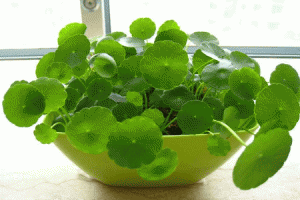Can Jiffy Pots be Planted?
If you're an avid gardener, you may have heard of or used Jiffy pots. These pots are made from peat moss and other organic materials and are designed to be planted directly into the ground, as they biodegrade over time. However, many gardeners still wonder if Jiffy pots can be planted. Let's explore this question in more detail.
Understanding Jiffy Pots
Jiffy pots are a popular option for starting seedlings because they are biodegradable and allow the delicate roots of seedlings to grow straight through the pot and into the soil. These pots come in various sizes and shapes and are essentially compressed peat moss and other organic materials held together with a netting made from organic materials. They come pre-sterilized and are intended to be used once before being planted directly into the soil.
Can Jiffy Pots Be Planted?
The short answer to this question is yes, Jiffy pots can be planted directly into the soil. However, some gardeners have encountered issues with the pots not breaking down quickly enough or causing problems with plant growth. It's essential to know how to use Jiffy pots properly to avoid these issues.
Proper Use of Jiffy Pots
It's important to follow a few key steps when using Jiffy pots to ensure they break down properly and don't cause issues with your plants:
Moisten the pots thoroughly before planting to activate the growth enzymes in the pot and allow it to expand.
Plant the pot with the top of the pot level with the soil, so it's covered in soil but not too deep.
Water the pot thoroughly and monitor the moisture level to ensure it stays damp but not waterlogged.
Avoid disturbing the pot as much as possible to allow the roots to grow through the netting and into the soil.
Be patient - Jiffy pots can take up to a few months to completely break down, and you may see remnants of the pot even after the plant has matured.
Potential Issues with Jiffy Pots
While Jiffy pots are a popular option for starting seedlings and can be planted directly into the soil, some gardeners have reported issues with the pots not breaking down quickly enough or causing issues with plant growth. Here are a few potential issues:
The pot can dry out and become difficult for roots to penetrate
The pot can become too compacted, making it difficult for water to penetrate and causing root rot
The netting on the pot can become exposed, causing it to dry out and making it difficult for roots to penetrate
To avoid these issues, it's essential to follow the proper use steps outlined above and monitor your plants' growth carefully.
Benefits of Using Jiffy Pots
Despite the potential issues with using Jiffy pots, they offer several benefits to gardeners:
Reduced transplant shock - because the roots grow straight through the pot and into the soil, there is less transplant shock when moving seedlings from the pot to the ground.
Increased plant growth - once the pot has broken down, it provides an excellent source of organic matter and nutrients for the plant.
Less waste and environmental impact - Jiffy pots are biodegradable and can eliminate the need for plastic pots.
Conclusion
Jiffy pots are a popular option for starting seedlings, and they can be planted directly into the soil with proper use. While there are potential issues, careful monitoring and following the proper use steps can help mitigate these problems. Using Jiffy pots can reduce transplant shock, increase plant growth, and have a positive environmental impact, making them an excellent option for gardeners who want to start their seedlings off right.

 how many times do yo...
how many times do yo... how many planted tre...
how many planted tre... how many pine trees ...
how many pine trees ... how many pecan trees...
how many pecan trees... how many plants comp...
how many plants comp... how many plants can ...
how many plants can ... how many plants and ...
how many plants and ... how many pepper plan...
how many pepper plan...































